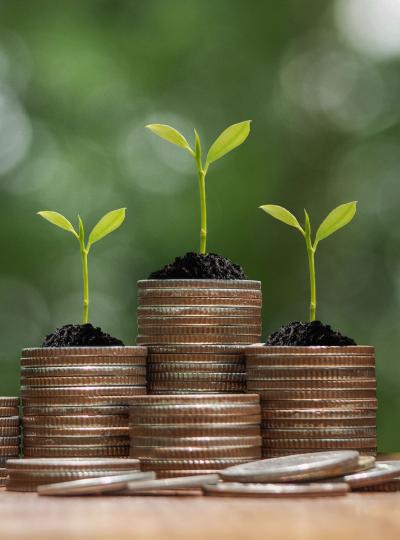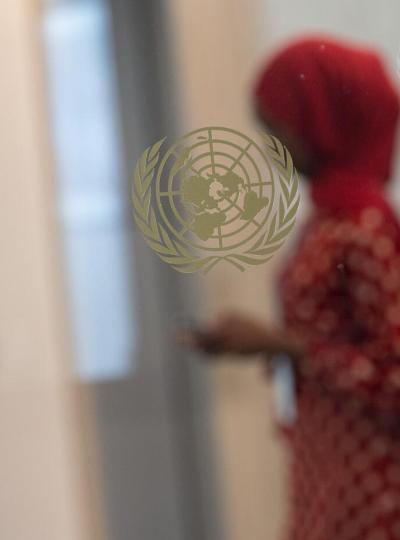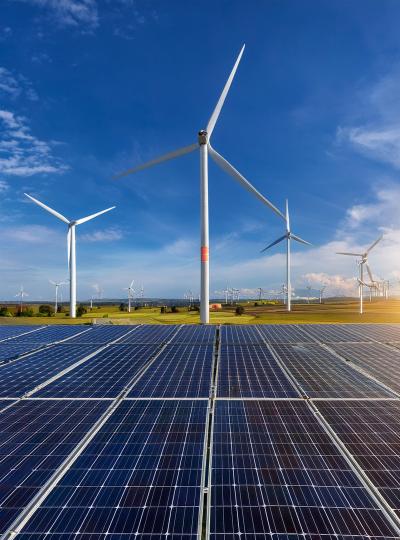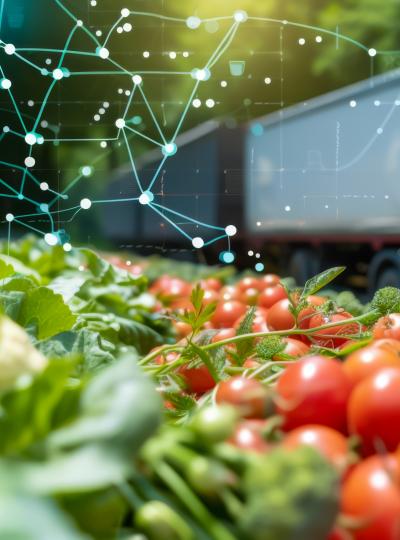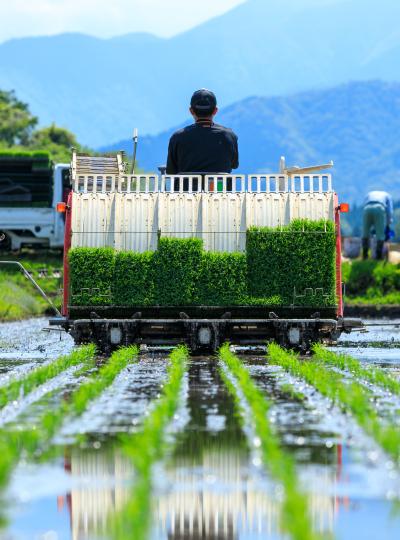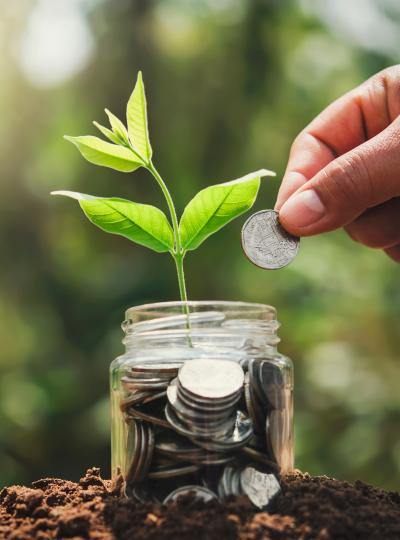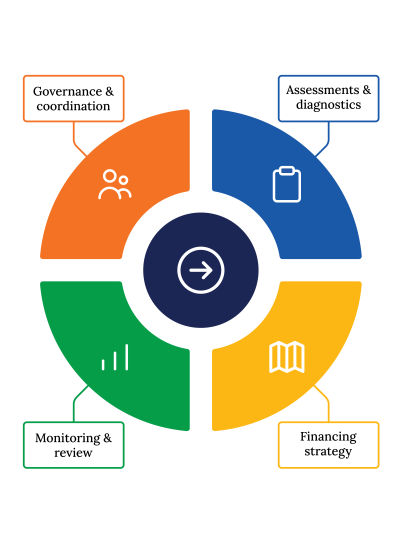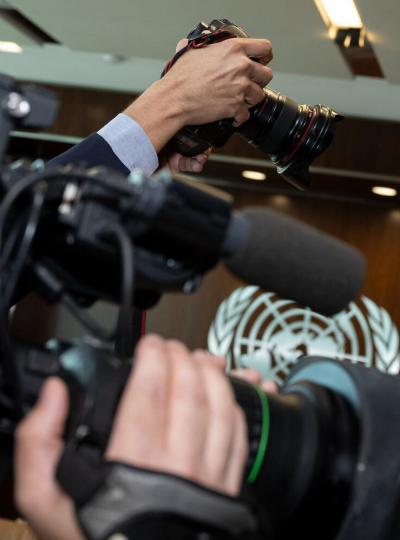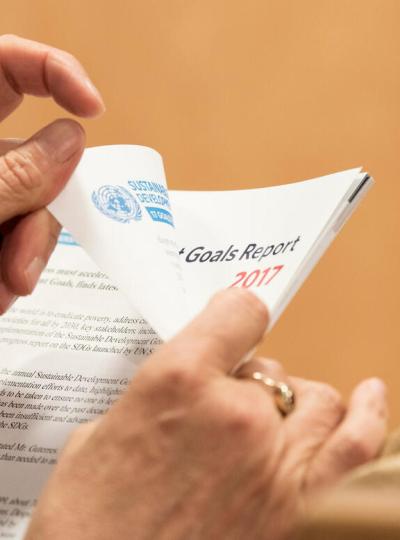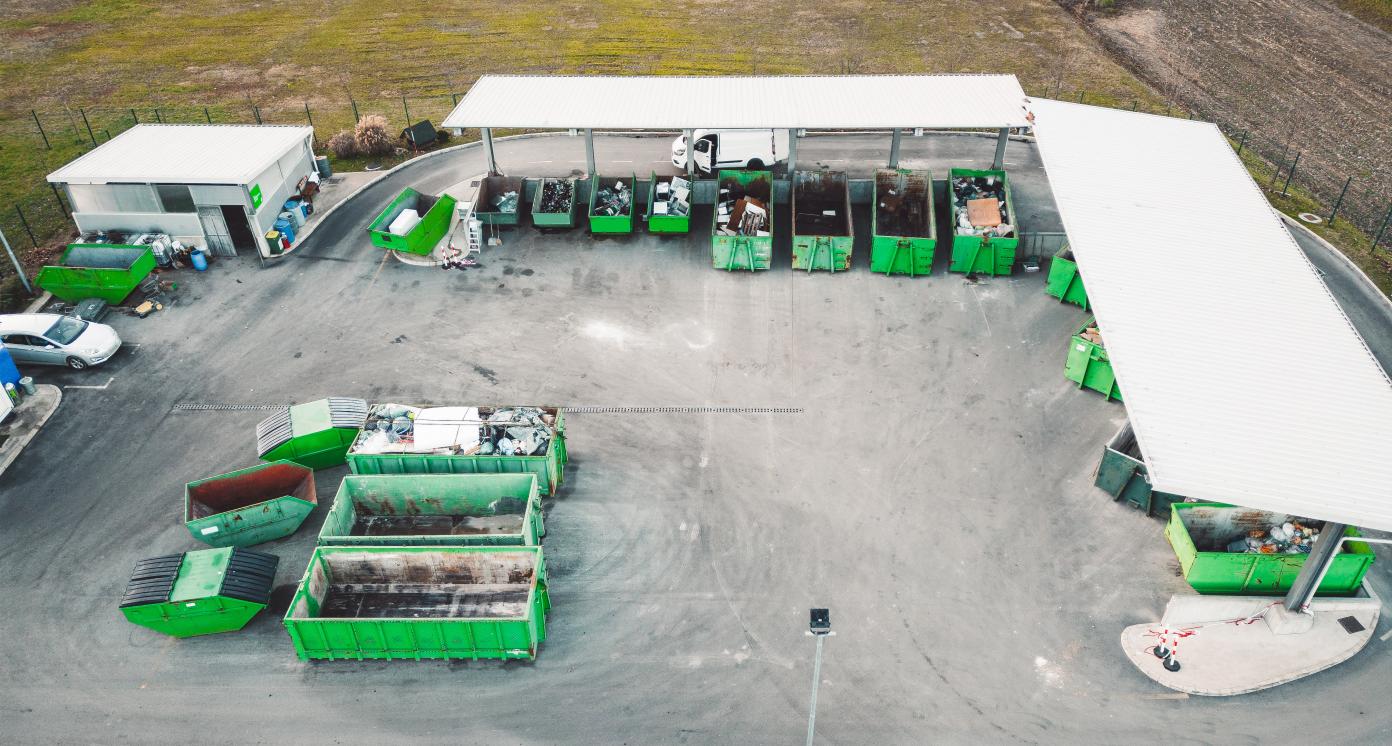Establish advanced manufacturing facilities for biodegradable and recyclable packaging
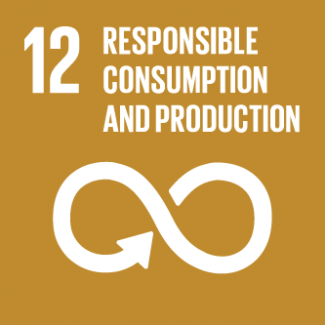
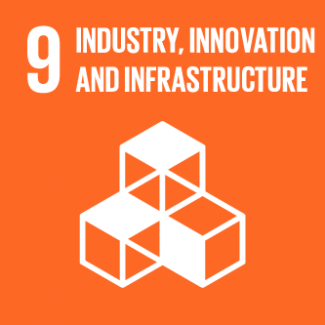
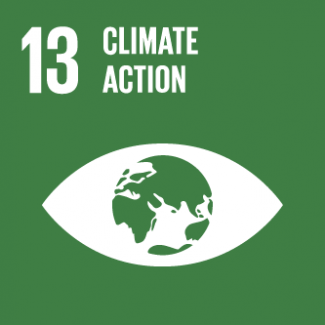
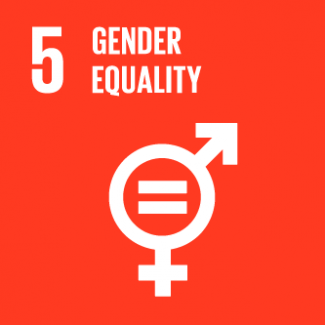
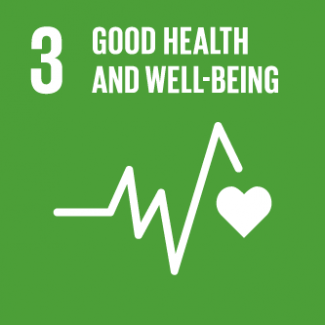
Business Model Description
Develop a network of state‐of‐the‐art manufacturing facilities dedicated to the production of biodegradable and recyclable packaging, leveraging IoT-enabled automation and sustainable materials. These facilities will serve FMCG, retail, and export markets, while concurrently providing custom design and white-label manufacturing solutions.
Expected Impact
Foster environmental sustainability and social equity through eco-friendly packaging, new green jobs, and inclusive economic growth.
How is this information gathered?
Investment opportunities with potential to contribute to sustainable development are based on country-level SDG Investor Maps.
Disclaimer
UNDP, the Private Finance for the SDGs, and their affiliates (collectively “UNDP”) do not seek or solicit investment for programmes, projects, or opportunities described on this site (collectively “Programmes”) or any other Programmes, and nothing on this page should constitute a solicitation for investment. The actors listed on this site are not partners of UNDP, and their inclusion should not be construed as an endorsement or recommendation by UNDP for any relationship or investment.
The descriptions on this page are provided for informational purposes only. Only companies and enterprises that appear under the case study tab have been validated and vetted through UNDP programmes such as the Growth Stage Impact Ventures (GSIV), Business Call to Action (BCtA), or through other UN agencies. Even then, under no circumstances should their appearance on this website be construed as an endorsement for any relationship or investment. UNDP assumes no liability for investment losses directly or indirectly resulting from recommendations made, implied, or inferred by its research. Likewise, UNDP assumes no claim to investment gains directly or indirectly resulting from trading profits, investment management, or advisory fees obtained by following investment recommendations made, implied, or inferred by its research.
Investment involves risk, and all investments should be made with the supervision of a professional investment manager or advisor. The materials on the website are not an offer to sell or a solicitation of an offer to buy any investment, security, or commodity, nor shall any security be offered or sold to any person, in any jurisdiction in which such offer would be unlawful under the securities laws of such jurisdiction.
Country & Regions
- Republic of North Macedonia: Eastern
- Republic of North Macedonia: Pelagonia
- Republic of North Macedonia: Polog
- Republic of North Macedonia: Skopje
- Republic of North Macedonia: Southeastern
Sector Classification
Resource Transformation
Development need
Transitioning from conventional, single-use packaging to sustainable alternatives is essential to mitigate environmental degradation. Eco-friendly packaging reduces plastic waste, conserves resources, and protects ecosystems. This shift supports a circular economy, meets growing consumer demand for sustainable products, and creates local job opportunities. (1)
Policy priority
Sustainable development and circular economy principles are central to the National Development Strategy. The country aligns with EU directives to reduce single-use plastics and boost recyclability. Government incentives foster green innovation and environmental protection, positioning eco-friendly packaging as a strategic sector for public investment. (1, 2, 3)
Gender inequalities and marginalization issues
While technical innovation remains a priority, the sector must also ensure inclusive growth. Equal access to training, entrepreneurship, and leadership is crucial for empowering women and marginalized groups. Gender-responsive policies in workforce development and supply chain management are essential for achieving equitable opportunities alongside environmental progress. (4)
Investment opportunities introduction
Opportunities include modern manufacturing facilities, advanced recycling technologies, and smart packaging solutions. Expanding local and regional production and fostering research collaborations can attract domestic and foreign capital, driving sustainable growth and innovation. (2)
Key bottlenecks
Challenges include high capital costs, limited access to advanced technologies, and inadequate recycling infrastructure. Market fragmentation and regulatory uncertainties hinder economies of scale, while shortages in skilled labor and integrated supply chains persist. Addressing these barriers requires targeted policy support and robust public-private partnerships. (36)
Industrials
Development need
The subsector urgently requires a shift from traditional, resource-intensive packaging to sustainable alternatives. This transformation is vital to reduce plastic waste, curb environmental damage, and advance circular economy objectives. Strengthening manufacturing capabilities and adopting eco-innovations can address both local and regional market demands. (5)
Policy priority
The Republic of North Macedonia’s alignment with EU directives on single-use plastics and recyclable materials positions eco-friendly packaging as a critical policy focus. Government incentives, tax benefits, and strategic frameworks underscore the importance of this subsector in achieving national sustainability targets and boosting green manufacturing. (2)
Gender inequalities and marginalization issues
Although the emphasis is on technical innovation, inclusive growth is equally important. Ensuring women and marginalized groups have equitable access to training, entrepreneurship, and leadership roles can broaden the talent pool. Gender-responsive policies in workforce development and supply chains are essential to foster fairness alongside environmental progress. (6)
Investment opportunities introduction
Eco-friendly packaging presents high-return prospects via modern production lines and advanced recycling technologies. Smart packaging solutions that minimize waste and extend product life attract both domestic and foreign investors. Expanding local markets and fostering R&D collaborations can drive innovation, employment, and sustainable growth. (1, 4)
Key bottlenecks introduction
Recycling in North Macedonia faces specific challenges such as low collection rates, insufficient waste sorting systems, and a lack of standardized recycling streams. Informal sector dominance, weak enforcement of extended producer responsibility (EPR), and limited investment in material recovery technologies further constrain efficiency and scale. (7)
Containers and Packaging
Pipeline Opportunity
Establish advanced manufacturing facilities for biodegradable and recyclable packaging
Develop a network of state‐of‐the‐art manufacturing facilities dedicated to the production of biodegradable and recyclable packaging, leveraging IoT-enabled automation and sustainable materials. These facilities will serve FMCG, retail, and export markets, while concurrently providing custom design and white-label manufacturing solutions.
Business Case
Market Size and Environment
< USD 50 million
10% - 15%
Total 1.5 million tonnes of industrial waste was generated in '20, of which 72% was non-hazard. (2)
The emerging eco-friendly packaging market in North Macedonia and the wider region remains under USD 50 million. This estimate reflects early-stage investments, with limited but growing infrastructure for biodegradable materials, and aligns with EU directives promoting a shift from single-use plastics to sustainable alternatives. (2)
A projected CAGR of 10–15% is supported by rising consumer awareness and policy measures favoring circular economy solutions. (11)
Replacing a substantial volume of plastic packaging annually aligns with EU plastic reduction targets and North Macedonia’s National Waste Management Plan (2021–2031). This estimate is derived from current waste collection data, ongoing pilot projects for compostable packaging, and the scaling potential of local producers transitioning to greener manufacturing processes. (12)
Indicative Return
10% - 15%
Market analyses report steady annual growth in eco-friendly packaging across Southeast Europe, supporting a 10–15% ROI. Rising consumer demand, coupled with government incentives, justifies these returns for biodegradable and recyclable packaging solutions (11)
Based on expert estimation, the expected non-leveraged ROI will range from 12–14% per annum, driven by high demand, scalability, and favorable market conditions. (13)
Investment Timeframe
Short Term (0–5 years)
Biodegradable packaging ventures in Southeast Europe have demonstrated payback periods of approximately 3–5 years, driven by moderate capital investments and rising consumer demand for eco-friendly solutions. (2)
Ticket Size
< USD 500,000
Market Risks & Scale Obstacles
Business - Supply Chain Constraints
Capital - Requires Subsidy
Capital - Limited Investor Interest
Impact Case
Sustainable Development Need
Plastic pollution and resource depletion drive the urgency for biodegradable and recyclable packaging. North Macedonia’s waste streams remain dominated by single-use plastics, causing environmental damage and constraining circular economy ambitions. (20, 31)
Limited green job opportunities and regional disparities highlight the need for inclusive and sustainable growth. Strengthening green manufacturing and circular economy initiatives can create skilled jobs, enhance local employment, and build long-term community resilience. (32)
Underdeveloped recycling infrastructure and reliance on imported raw materials hinder environmental and economic sustainability. Investing in eco-friendly packaging production supports a self-sufficient supply chain, aligning with global climate and resource efficiency goals. (33)
Gender & Marginalisation
Women remain underrepresented in manufacturing and leadership roles. The Advanced eco-friendly packaging solutions aims to close this gap by offering targeted skills training and career pathways, fostering equitable workplace participation and inclusive economic growth. (4, 6)
Rural and low-income communities often lack access to stable, green employment. By establishing facilities in underserved areas, the Advanced eco-friendly packaging solutions enables marginalized groups to benefit from emerging sustainable manufacturing opportunities. (34)
Expected Development Outcome
Eco-friendly packaging cuts plastic waste, advances circular economy targets, and boosts resource efficiency, reducing environmental harm while meeting growing consumer and policy demands.
Local production leveraging IoT automation spurs innovation, job creation, and skill development in advanced manufacturing, enhancing economic resilience in underserved regions.
Strengthened recycling infrastructure and sustainable supply chains encourage local input sourcing, reduce import dependence, and foster a robust environmental stewardship culture.
Gender & Marginalisation
Transparent hiring and training policies expand youth participation, ensuring fair access to jobs and leadership roles in sustainable manufacturing, bridging workforce gaps and fostering inclusive innovation.
Establishing facilities in underserved areas offers stable employment, supporting community resilience and inclusive growth by providing green job opportunities in the eco-friendly packaging sector.
Targeted mentorship programs empower women and professionals from other industries, enhancing diversity in advanced manufacturing and strengthening social equity across the evolving supply chain.
Primary SDGs addressed

Indicator 12.4.1: Number of parties to international multilateral environmental agreements on hazardous waste, and other chemicals that meet their commitments and obligations in transmitting information as required by each relevant agreement
As of 2022, North Macedonia generated 467 kg of municipal waste per capita, with only 1.97% recycled—up from 0.7% in 2021 but still among Europe's lowest. Most waste is still landfilled, reflecting limited infrastructure for recycling, sorting, and circular practices at the local level. (2, 35)
By 2030, North Macedonia aims to recycle 65% of municipal waste and reduce landfill use to 30%. Municipalities are expected to cut waste generation by 10–30%. Meeting these targets will require investment in infrastructure, stronger enforcement, and greater public awareness. (35)

9.3.1 Proportion of small-scale industries in total industry value added
9.2.1 Manufacturing value added as a proportion of GDP and per capita
Small‑scale industries, generated only 22.5 % of North Macedonia’s total industrial value added in 2023. Their weak total‑factor productivity reflects constrained finance, limited human capital, and small firm size; tackling these gaps is imperative for competitiveness and growth. (36)
R&D investment in sustainable manufacturing stands at around 0.3% of GDP, constraining innovation. IoT adoption in production lines is limited, with few pilot projects testing advanced automation. This underscores the demand for infrastructure and technology upgrades in eco-friendly packaging. (16)
Higher rates of inclusive and sustainable economic growth should be supported by higher total factor productivity and strong investment activity, i.e. gross investment, on average, above 25% of annual GDP over the next two decades. (35)
Raise R&D spending on sustainable manufacturing from 0.3% to 1% of GDP by 2030. Expand incentives for industrial IoT adoption and eco-innovation grants, fostering advanced automation and stronger infrastructure for biodegradable packaging development. (16, 35)

13.2.2 Total greenhouse gas emissions per year
The Republic of North Macedonia’s greenhouse gas emissions from the industrial sector remain high, contributing roughly 15% of total emissions. Current waste management systems exacerbate these emissions, underscoring the role of recyclable and biodegradable packaging in mitigating climate impact.(17)
Target a 20% reduction in industrial greenhouse gas emissions by 2030, in line with the National Waste Management Plan and EU climate objectives. Encourage cleaner production techniques, energy efficiency measures, and greater reliance on renewable energy in packaging facilities. (35)

5.5.2 Proportion of women in managerial positions
Women occupy less than 20% of manufacturing and leadership roles in North Macedonia. The limited availability of technical and managerial training programs hinders women’s advancement in green manufacturing, underscoring the potential impact of inclusive eco-friendly packaging initiatives. (4,6)
Elevate women’s labour‑force participation relative to men from 66.2 % in 2022 to 75 % by 2034 and 85 % by 2044 by expanding skills‑training and mentorship initiatives and enforcing equitable recruitment and promotion policies, thereby fostering gender parity across all sectors of the evolving economy. (35)
Secondary SDGs addressed

Directly impacted stakeholders
People
Gender inequality and/or marginalization
Planet
Corporates
Public sector
Indirectly impacted stakeholders
People
Gender inequality and/or marginalization
Planet
Corporates
Public sector
Outcome Risks
Poorly managed demand for bio-based materials may lead to overharvesting or monoculture farming, reducing soil health and biodiversity, and undermining environmental goals.
IoT-enabled processes could expose businesses to cybersecurity threats, risking production downtime, data breaches, and potential reputational damage.
Unregulated disposal of biodegradable waste might still contribute to pollution if composting and recycling infrastructure remain inadequate or poorly enforced.
Market saturation or competition could drive down profit margins, threatening the long-term viability of eco-friendly packaging ventures in the region.
Gender inequality and/or marginalization risk: Without sustained training and fair hiring, the sector risks biases, limiting women's and marginalized groups' access to jobs and leadership.
Impact Risks
High upfront investment may deter widespread adoption of eco-friendly packaging, limiting the sector’s capacity to reduce plastic pollution and achieve circular economy goals.
Weak policy enforcement and insufficient recycling infrastructure can undermine environmental benefits, as biodegradable materials may still end up in landfills or incinerators.
Fluctuating consumer demand for sustainable products may create market instability, reducing incentive for manufacturers to maintain eco-friendly production lines.
Unintended resource strain on agricultural land or forests may emerge if bio-based inputs are sourced unsustainably, leading to habitat loss and decreased biodiversity.
Impact Classification
What
Biodegradable packaging reduces plastic waste, fosters circular economy targets, and addresses waste management gaps, enhancing environmental sustainability and resource efficiency.
Who
Local workforce, youth, and women gain stable green jobs. Consumers benefit from reduced plastic pollution, while communities experience improved public health and environmental conditions.
Risk
High capital costs, weak policy enforcement, or unsustainable sourcing can curtail environmental benefits and hinder inclusive hiring, limiting overall impact on plastic reduction and equity.
Contribution
Advanced Eco-friendly packaging solutions invests in eco-friendly manufacturing, skill development, advancing SDGs for inclusive economic growth in the region.
How Much
Aims for a substantial cut in single-use plastics, supporting national targets and boosting green employment, as guided by EU directives and local circular economy plans.
Impact Thesis
Foster environmental sustainability and social equity through eco-friendly packaging, new green jobs, and inclusive economic growth.
Enabling Environment
Policy Environment
National Waste Management Plan 2020. Aims to modernize waste infrastructure by reducing landfilling and boosting recycling. It promotes public-private partnerships for eco-friendly packaging and supports EU compliance, accelerating the shift to a circular economy. (12)
National Strategy for Sustainable Development (2009–2030). This strategy underscores sustainable growth, resource efficiency, and environmental protection, forming the basis for reforms in waste management and the adoption of circular economy principles in packaging. (18)
National Ecology Action Plan. Provides guidelines to harmonize the Republic of North Macedonia’s environmental and waste management policies with EU acquis communautaire reinforcing regulatory frameworks for sustainable packaging and circular economy initiatives. (19)
Financial Environment
Financial incentives: Low-interest loans and grant programs through the Fund for Innovation and Technological Development enable green manufacturing upgrades, helping businesses adopt IoT and biodegradable materials in packaging. (22)
Fiscal incentives: North Macedonia’s flat corporate income tax rate of 10% creates a favorable fiscal environment, helping reduce capital costs and encouraging private investment in circular economy initiatives such as eco-friendly packaging. (23)
Other incentives: Subsidies are available for arable land used to grow field crops, medicinal, aromatic, and spice plants. The MEDF through the EU-funded project, launched a third call to support innovation and competitiveness in agriculture and food sectors. (24, 25)
Regulatory Environment
Law on Packaging and Packaging Waste: Establishes extended producer responsibility, mandating producers to finance collection and recycling. It encourages eco-design, reducing single-use plastics and driving demand for biodegradable packaging. (20)
Regulation on safety requirements for plastic materials in food contact restricts thin plastic bags and imposes fees, fostering a market for reusable or biodegradable alternatives and reinforcing sustainable packaging solutions. (21)
Marketplace Participants
Private Sector
Local packaging manufacturers, FMCG companies, and retailers driving demand for eco-friendly solutions. Tech firms offering IoT automation also play a key role, supplying advanced machinery and digital services to streamline production and optimize supply chains.
Government
The Ministry of Economy; the Ministry of Environment and Physical Planning; the Ministry of Finance; the Ministry of Agriculture, Forestry and Water Management; the Ministry of Transport and Communication; and the Ministry of Local Self-Government. (2)
Multilaterals
Organizations such as the European Bank for Reconstruction and Development (EBRD), the World Bank, and the EU Delegation. They offer funding, technical assistance, and policy guidance, promoting circular economy projects in North Macedonia.
Non-Profit
Environmental NGOs, and advocacy groups that champion sustainable packaging and community awareness. They conduct educational programs, lobby for stronger regulations, and support inclusive workforce development.
Public-Private Partnership
Collaborations between government agencies and private firms to develop modern recycling facilities, pilot biodegradable packaging projects, and share costs for research, infrastructure, and skill-building initiatives.
Target Locations
Republic of North Macedonia: Eastern
Republic of North Macedonia: Pelagonia
Republic of North Macedonia: Polog
Republic of North Macedonia: Skopje
Republic of North Macedonia: Southeastern
References
- (1) European Strategy for Plastics in a Circular Economy (2018), European Commission
- (2) A Roadmap towards Circular Economy of North Macedonia (2024), OECD
- (3) LAW ON PACKAGING AND PACKAGING WASTE MANAGEMENT
- (4) Gender Equality Strategy 2020-2025, European Commission
- (5) Schmidt, J.; Challenges and Solutions for Plastic Packaging in a Circular Economy (2021),Volume93, Issue11 Special Issue:Industrielle Ressourcenstrategien für eine zirkuläre Wirtschaft
- (6) Women entrepreneurs in North Macedonia embrace circular economy, UNDP (2024). Internet link: https://www.undp.org/north-macedonia/news/women-entrepreneurs-north-macedonia-embrace-circular-economy
- (7) ADEMI, A., (2024). CIRCULAR BUSINESS MODELS: DRIVERS AND BARRIERS TO SMES IN NORTH MACEDONIA. Trends in Economics, Finance, and Management Journal, 6(1), 35-49. Arrival Date Posted By:https://tefmj.ibupress.com/articles/circular-business-models-drivers-and-barriers-to-smes-in-north-macedonia
- (8) Lieder, M., Rashid, A.; Towards circular economy implementation: a comprehensive review in context of manufacturing industry, Journal of Cleaner Production, Vol. 115 (2016).
- (9) Cegerica, Internet Link: https://cegerica.me/about/
- (10) Underpinning Circular Economy Progress in the Western Balkan Countries: A Comprehensive Policy Implementation Analysis, (2022), LOGEX, Founded by Rockefeller Brothers Fund.
- (11) Biodegradable Plastics Market Size, Share, Competitive Landscape and Trend Analysis Report by Type, by Application : Global Opportunity Analysis and Industry Forecast, 2023-2033, Allied Market Research
- (12) North Macedonia’s National Waste Management Plan (2021–2031)
- (13) Answers for interviews
- (14) Saveth, B. et al.;Embracing Sustainability: The Rise of Eco-Friendly Packaging Solutions (2023), Forbes, Link:https://www.forbes.com/councils/forbesbusinesscouncil/2023/06/23/embracing-sustainability-the-rise-of-eco-friendly-packaging-solutions/
- (15) Abatan, A. et al.; Sustainable packaging innovations and their impact on HSE practivies in the FMCG industry, Magna Scientia Advanced Research (2024)
- (16) World Bank (2019), Finding Solutions to Youth Unemployment in North Macedonia
- (16) Link: https://tradingeconomics.com/macedonia/research-and-development-expenditure-percent-of-gdp-wb-data.html
- (17) National GHG Inventory of North Macedonia, 2021. Link: https://api.klimatskipromeni.mk/data/rest/file/download/da9e1369c0909114f2b5077b5e0a2ed0876bdc2434f0d515175e487f2b29044d.pdf
- (18) National Strategy for Sustainable Development in the Republic of Macedonia, 2008. Ministry of Environment and Physical Planning of the Republic of Macedonia
- (19) Second National Ecology Action Plan (2006), Ministry of Environment and Physical Planning
- (20) Law on Packaging and Packaging Waste Management, Official Gazette of the Republic of Macedonia No. 215/2021 of 16.09.2021 "21) REGULATION ON THE SPECIFIC SAFETY REQUIREMENTS FOR RECYCLED PLASTIC PRODUCTS AND MATERIALS COMING IN CONTACT WITH FOOD, THE PROCEDURE FOR APPROVAL OF RECYCLING PROCESSES OF PLASTIC PRODUCTS AND MATERIALS COMING IN CONTACT WITH FOOD AND THE LABELLING OF RECYCLED PLASTIC PRODUCTS AND MATERIALS COMING IN CONTACT WITH FOOD, FOOD AND VETERINARY AGENCY "
- (22) The Fund for Innovation and Technologigal Development. Link:https://fitr.mk/en/mission-and-goals/?utm_source=chatgpt.com;Green Development Republic of North Macedonia Link:http://www.greendevelopment.mk/mk/newsReadMore.aspx?id=13
- (23) Law on Profit Tax, "Official Gazette of the Republic of Macedonia", No. 112/14...248/18 and Official Gazette of the Republic of Macedonia", No. 232/19...199/23
- (24) Macedonian Enterprise Development Foundation, on behalf of the project "AgroSmart - Development of modern and sustainable agriculture", Call for financial support for Promoting innovative investment projects in agriculture, forestry and the agri-food industry and Improving competitiveness through promoting cooperation between farmers
- (25) LAW ON AGRICULTURE AND RURAL DEVELOPMENT, Official Gazette of the Republic of Macedonia No. 49/2010, 53/2011, 126/2012, 15/2013, 69/2013, 106/2013, 177/2014, 25/2015, 73/2015, 83/2015, 154/2015, 11/2016, 53/2016, 120/2016 and 163/2016
- (26) Eastern Planning Region Development Program 2021-2026, Center for Development of the Eastern Planning Region
- (27) Program for the Development of the Pelagonian Planning Region 2021-2026, Center for the Development of the Pelagonian Planning Region
- (28) Program for the Development of the Polog Planning Region 2021-2026, Center for the Development of the Polog Planning Region
- (29) Program for the Development of the Skopje Planning Region 2021-2026, Center for the Development of the Skopje Planning Region
- (30) Program for the Development of the Southeastern Planning Region 2021-2026, Center for the Development of the Southeastern Planning Region "31) DIRECTIVE (EU) 2019/904 OF THE EUROPEAN PARLIAMENT AND OF THE COUNCIL on the reduction of the impact of certain plastic products on the environment, https://eur-lex.europa.eu/eli/dir/2019/904/oj" "32) National Employment Strategy 2021-2027 with Employment Action Plan 2021-2023"
- (33) North Macedonia’s National Waste Management Plan (2021–2031)
- (34) Reference: ILO (2018). World Employment and Social Outlook 2018: Greening with Jobs.
- (35) National Development Strategy of the Republic of North Macedonia 2024-2044
- (36) State Statistical Office Database. Note: micro-enterprises (1–9 employees)
- (36) OECD (2024), Western Balkans Competitiveness Outlook 2024: North Macedonia, OECD Publishing, Paris.

